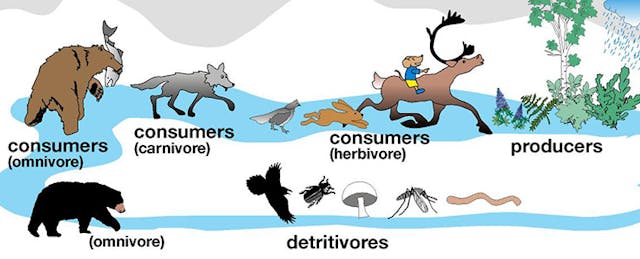In my experience with job preparation and the tech that supports college and career readiness, the majority of conversations seem to stop at the word college. We forget that a staggering number of students will never actually step foot on the college graduation stage.
But there’s room for growth. Let’s consider, for example, what happened at Yellowstone.
For seventy years, wolves were absent from Yellowstone Park. As a result, the elk population grew rampant and grazed the park dead and bare.
Then in 1995, humans reintroduced a small group of wolves to the park as an effort to regulate the elk population, and regulate they did. What was unexpected however, was their true impact. Overnight, the elk became prey. As a result, the elk avoided open areas and decreased in population. This allowed the vegetation to grow back. As the vegetation grew, trees grew, more birds and more beavers appeared. Beaver dams resulted in more otters, fish and other animals arriving.
But the most remarkable thing that happened was that the physical landscape of Yellowstone changed. Because of the increase in vegetation, the land became stronger. As a result, there was less erosion and the rivers ran faster and deeper and became stronger in their course.
One small group of wolves literally changed the physical geography of Yellowstone Park.
So, what does this have to do with education? Everything.
For years, education has been focused on producing college-educated students ready to graze the field of employment, forgetting that there are other post-secondary pathways and non-degree roles in the post-secondary ecosystem. And by solely focusing on the college side of the “college & career readiness” equation, we’re making it very difficult for non-college bound students to find these roles.
How are we making it difficult? I’m glad you asked.
From kindergarten, we put the spotlight on college and force-feed students statistics about how much more money college grads earn, and talk about the jobs, opportunities and success that will be waiting for them after college. And ultimately, we make sure to illustrate potential perils should students decide not to go to college. “You don’t want to end up working in a factory, do you?” we’ll say.
The problem is much like the problem in Yellowstone Park. In order for us to grow our economy, become stronger and see industries thrive, we need all types of role players in the ecosystem.
Talking, or rather, educating a young person “out” of working in a factory is ridiculous. America needs workers in the manufacturing industry. We’re not talking about working in a dark, soot covered factory with no breaks and a raspy-voiced, cigar smoking foreman. In fact, the average manufacturing worker made over $77,000 in 2012. That’s $15,000 more than the average worker in all other industries. What’s worse is that the National Association of Manufacturers reports that as many as 600,000(!) jobs are unfilled right now because there aren’t enough skilled workers to fill them.
There aren’t enough skilled workers to fill the jobs available. Let that sink in for a minute.
These are jobs that don’t require a degree. These jobs require a set of skills that are not being taught. These are jobs that we could prepare students for--years before they leave high school.
And it’s not just manufacturing. Skilled trades, child care, IT and sales are all slated for shortages.
Approximately 45% of high school students are going directly to work after finishing high school, but they leave completely unaware of their varied options. Why? Our system has been set up to cater to elk. Our system has been so focused on the destination of a particular group of students that the entire ecosystem is suffering as a result.
There are over 106,000,000 working Americans without four-year college degrees. These people all play a very significant role in our economy. They are the bus drivers, the police officers, ambulance drivers, software developers, web designers, photographers, train conductors, musicians, bartenders, actors, artists, fashion designers, retail workers and pilots. And just as Yellowstone Park needed more beavers, otters and fish to thrive, we need more people willing and ready to do these types of jobs.
The Bureau of Labor Statistics predicts that over 75% of future entry-level jobs will require less than a bachelor’s degree, and if we aren’t careful, many of those jobs will go unfilled because we spent so much of our time preparing students for college--instead of careers.
It’s time for us to focus on the other roles that need to be filled in our economy. Had Yellowstone Park not introduced wolves back into the park, the consequences would have been dire; the park would have died. And if we do not start focusing efforts on preparing students for the various post-secondary pathways that exist beyond high school, we will face problems as dire as those faced in Yellowstone Park.
Too many elk can be destructive to an ecosystem, and without otters, bears, fish, rabbits and hawks, the entire ecosystem suffers. It’s time for us to embrace the wolves and reestablish a career preparation food chain.
Ryan Porter is the founder of RaiseYourFlag.com, a web platform to help work-bound students find a non-degree career path and connect to the companies that could hire them.


